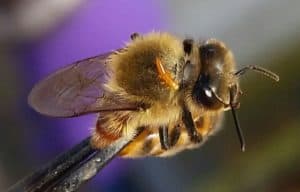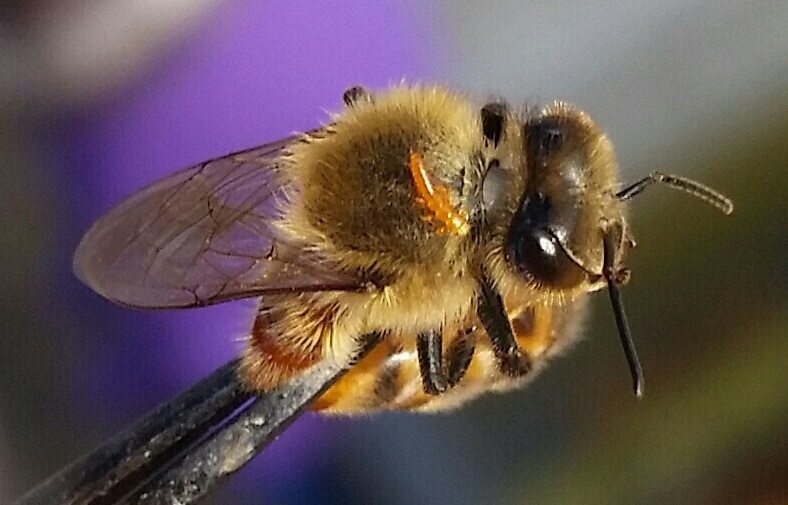As a Technical Transfer Team member, I have a unique perspective of beekeeping. We get to see operations of all different sizes and styles, and we see bees of varying degrees of health, strength, and occasionally odd situations. One day this fall, we noticed a particularly odd occurrence: strange orange larvae on the thorax of some bees.

We took samples back to the lab and carefully inspected the larvae under a microscope. Using a dichotomous key, I was able to name the organisms down to genus. They were first instar larvae of the blister beetle (Meloe sp.). Now what on earth is a blister beetle and why is it hitching a ride on these bees? Is it harmful to bees? Could this be a new pest?
We did some investigating to find out. It turns out that blister beetle larvae are previously reported on bees and other pollinators in the US. Larvae of some Meloe species grab hold of pollinators while on flowers. In fact, there’s a range of pollinators they attach to: solitary bees, wasps, flies, beetles…and honey bees. Some species parasitize bees by feeding on hemolymph, but their main purpose for interacting with pollinators remains a mystery. The fact that phoretic larvae use such a wide range of pollinators doesn’t support the idea that they are using honey bees as hosts to parasitize. Researchers think that these larvae might be catching a ride by means of dispersal. However, work is still ongoing to support this idea.
We hope to find out the potential damage the beetles can cause for our beekeeper.
